Wait a minute… didn’t I mention in the previous chapter that this time I would be highlighting some interesting quirks about the Japanese language instead of a formal chapter? So why is today’s chapter on kanji?
Well, let me just assure you that kanji is one of the craziest things about Japanese. Wars have been fought over deciding how a kanji should be read.
I realized that in order to get to the more interesting stuff, I need to first explain kanji and related topics. So I’ll be doing a crash course to kanji today and then we’ll get to the things that I promised in the next lesson. Really.
Before we start, here are your character nominations for this week’s chapter:
- Yuki Nagato (Suzumiya Haruhi no Yuuutsu)
- Lacus Clyne (Gundam SEED)
- Suiseiseki (Rozen Maiden)
- Shana (Shakugan no Shana)
- Mahoro (Mahoromatic)
- Nanaka Shirakawa (D.C. II)
- Saber (Fate/stay night)
- Kotori Shirakawa (D.C.)
Tough call. But…
Mahoro wins!!!… just because I happen to have some pictures of her lying around. ^^;; On to today’s lesson…
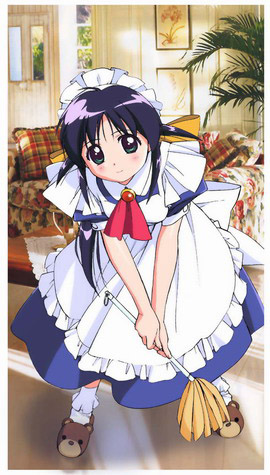
Introduction
As you probably know, kanji originated from China and not space. But to a native English speaker it might as well have orignated from space. Kanji is an insidious conspiracy to deter foreigners from learning Japanese. Imagine that instead of 26 roman letters, you have 5000 pictograms that each has an individual meaning and can be combined with other characters in various arrangements to create more complex ideas. Each of these alien writings also has multiple possible readings and meanings depending on the context.
That said, it’s still better than Chinese, where ALL the words are written in hanzi (mandarin pronounciation of kanji). At least with Japanese you get hiragana and katakana, which are phonetic alphabets.
Kanji is not all bad, though. You can fit more ideas into a smaller space and once you’ve mastered them you can laugh at the other people who are still struggling. :3
Readings
Depending on the kanji’s origins and usage, there can be anywhere from one to more than ten ways of reading a particular kanji. The readings are grouped into three categories: 音èªã¿ (on-yomi), 訓èªã¿ (kun-yomi) and åä¹—ã‚Š (nanori).
On-readings came from ancient Chinese readings and still bear some similarities to modern Chinese. They are easy to figure out with enough experience if you are a native Chinese speaker. However, they sound different enough such that a Chinese speaker with zero exposure to Japanese will probably not be able to comprehend words pronounced with on-reading.
Kun-readings came from the spoken Japanese language that existed long before a writing system was developed using Chinese characters. Kanji characters came to be used to represent native Japanese words that had similar meanings and these characters took on the words as their kun-readings.
Nanori are basically special readings that some kanji may take on when they are used in a name. They can only be found in names. However, kanji in names are not limited to nanori and can also be read using on-reading and kun-reading. Almost all kanji characters have both on-readings and kun-readings, but many of them do not have nanori.
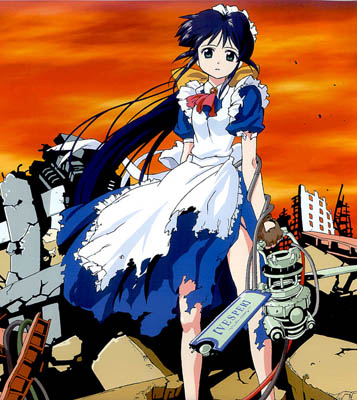
On vs. Kun
There are some general patterns with regards to determining whether a word should be reading using the on-readings or kun-readings of its kanji components.
- on-reading is used for most compound words (usually in pairs of two kanji).
- æ–°é®® (shinsen)
- 戦争 (sensou)
- å¦ç”Ÿ (gakusei)
- 開始 (kaishi)
- kun-reading is used for most native Japanese words (usually with one kanji + some hiragana)
- æ–°ãŸãªã‚‹ (aratanaru)
- 争ㆠ(arasou)
- å¦ã¶ (manabu)
- é–‹ã (aku or hiraku)
I have highlighted the kanji shared by both sets of examples above so that you can see just how much the on-reading differs from the kun-reading of the same kanji.
Furigana
All words in Japanese can be written using hiragana but kanji is usually preferred for easier reading. There are exceptions, though. Some words are more commonly written in hiragana because the kanji version is archaic, troublesome or just ugly.
ã›ã£ã·ã
切腹
seppuku
When a word is written using kanji, the hiragana version may be written above it in a smaller script size. Since hiragana is a phonetic alphabet, this acts as a reading guide. Hiragana written above (and sometimes below) kanji is known as furigana.
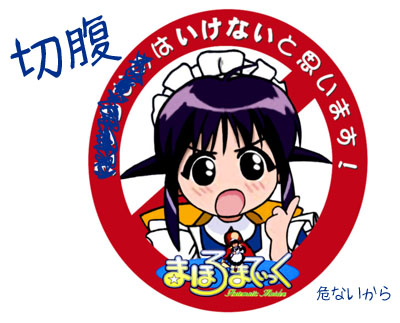
Most Japanese publications only include furigana for 1. words that are archaic or not commonly used, 2. names of people and places and 3. made-up words or words coined for new phenomenons or inventions. Manga and novels targeted at children and teenagers tend to have furigana for all the kanji. When the text is printed vertically, such as in manga and novels, the furigana is to the right of the kanji.
Example
Here’s an example of a compound kanji word.
ã«ã€€ã€€ã€€ã»ã‚“   ã“ã
日本国
nihonkoku
This word means “Japan”. Japan can also be written as simply 日本 (nihon/nippon). 日本国 means literally “the nation of Japan”. It consists of three kanji characters. In this case, æ—¥ means “sun”, 本 means “origin” and 国 means “country”. Literally, kanji by kanji, it translates to “the nation of sun’s origin” or as Westerners prefer it “the land of the rising sun”.
The word as a whole is read as “nihonkoku“, which consists of the on-readings of the three kanji characters. Here’s the first one:
ã²
æ—¥
hi
Meanings: sun, days, Japan
On-readings: nichi jitsu
Kun-readings: hi bi ka
Nanori: a aki iru ku kusa kou su tachi ni nitsu he
Note that “ni” is not, strictly speaking, an on-reading of æ—¥, neither is the “ni” in “nihon” the nanori. The combined on-reading for 日本 is technically “nippon” (contraction of nichi + hon) which slowly evolved into “nihon“. Both readings are used in modern Japanese and they are generally interchangeable. Just a little FYI.
Review
Reading kanji is hard because of the numerous possible permutations. However, general guidelines do exist. You can usually guess whether the on-readings or the kun-readings should be used, which narrows the possiblities down to half… Oh well.
You can search for all the possible readings of a kanji using a kanji dictionary such as the one included in WWWJDIC.
If all else fails, pray for furigana.
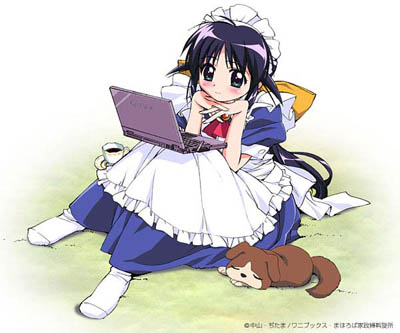
Origins of Kanji
Kanji consist of radicals and elements. Elements refer to the different parts of a kanji that come together to form the kanji. For example, the kanji 明 (bright) consists of the radicals 日 (sun) and 月 (moon).
In general, there are two different kinds of elements: semantic and phonetic. Semantic elements are referred to as “radicals” while phonetic elements have no special names.
Semantic Elements
Chinese hanzi, the origin of Japanese kanji, first came from pictograms depicting the objects being decribed. 月 (moon) in its earliest form looked like a crescent, for example.
In order to describe more complex and abstract ideas, multiple characters are combined together to form a new character. For example, 雨 (rain) + 田 (field) = 雷 (thunder). Elements of a character that contribute to its meaning are called semantic elements. Semantic elements are also sometimes referred to as radicals. 雨 and 田 are the two radicals that make up 雷.
Phonetic Elements
But soon people realized that just wasn’t any way to draw certain ideas using pictures. Thus, an alternative way of creating hanzi by using an element for its phonetic value is born.
For example, 女 (woman) + 馬 (horse) = 媽 (mother in Chinese). The element 馬 (read as “ma3” in Chinese) in this case is not actually incorporated for its meaning but for its phonetic reading: 媽 is read as “ma1”. The element 馬 is the phonetic element because it gives us the reading “ma”.
Note: The numbers after the reading indicate the tone. There are four tones in Chinese Mandarin.
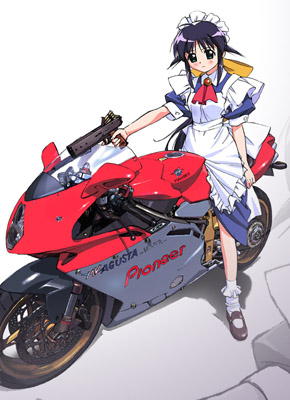
Radicals
Chinese and Japanese dictionaries classify the characters by their main radical. The main radical of a kanji/hanzi is usually located on the top or the left side of the kanji. Essentially the main radical is a semantic element that tells you what kind of kanji/hanzi is the character you are looking at.
女 is the main radical for 媽 and tells us that this character is related to women. Although this isn’t always very useful for guessing the meaning of a kanji since it’s hard to tell what things were considered femine by the ancient Chinese…
Example of Phonetic Element
There are some common phonetic elements that are combined with a variety of main radicals to get words that mean completely different things but have similar on-readings. For example, 白 (white) 泊 (overnight) æ‹ (clap) 伯 (uncle) æŸ (oak) all share the on-reading “haku” because all the other kanji use 白 as their phonetic element.
On another note, 白 has the kun-reading “shiro“, such as in 白ㄠ(shiroi). It means white. A caucasian is referred to as a 白人 (hakujin). The kun-reading for æŸ on the other hand is “kashiwa“. Kun-readings are usually not related to the phonetic elements.
Example of Semantic Element
é›· (thunder) 雫 (droplet) 雲 (cloud) é›» (electricity) all share the 雨 (rain) radical as their main radical. In a sense, they are all things that are related to rain. In a printed dictionary, you would search for them (assuming you don’t know the readings) under a list of kanji with the 雨 radical arranged by stroke counts. They have completely different on-readings because the element they share is used for its meaning and is not phonetic.
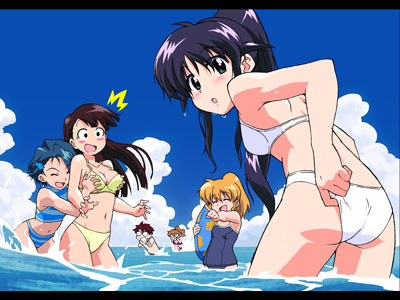
Simplification of Kanji
During the Pre-WW2 years, kanji was nearly identical to Chinese hanzi except for some kanji created natively. Today however, a lot of kanji characters are written quite differently from their hanzi counterparts. This is mainly because Japanese and Chinese writings underwent simplification on two sepereate occasions.
Simplified Chinese was introduced in the 50s and 60s by the People’s Republic of China. The writing system was significantly simplified in order to promote literacy. For example, the hanzi for horse 馬 is written in Simplified Chinese as 马. Simplified Chinese has been steadily gaining popularity due to China’s growing economic clout.
Traditional Chinese continues to be used by Taiwan, Hong Kong and Macau, i.e. the territories that were not under central government control during the simplification process. Some people see Traditional Chinese as a symbol of resistance against the Communist Party or as an important part of Chinese culture, but personally I think China had the right idea by making the language a heck lot easier to write… Most literate people living in China and Taiwan can read both scripts, so it probably doesn’t matter anyway.
Meanwhile, the post-WW2 Japan under American Occupation rule was encouraged to simplify its writing system, which it did. Thus Japan and China both simplified their writing system independently of each other. Modern Japanese kanji is a mixture of Traditional Chinese, Simplified Chinese and some simplifications unique to Japanese.
Comparison of Simplified Versions
Some examples to show how the three writing systems differ.
å¸ã€€å¦ã€€å¦
會 会 会
電 电 電
書 书 書
轉 转 転
圖 图 図
As you can see, some characters follow either Traditional or Simplified Chinese while some characters are simplified in a different way from Simplifiied Chinese.
Native Kanji
There are some kanji characters that are native to Japanese. They have never existed in Chinese, whether Traditional or Simplified. This is not counting those kanji that originated from Chinese but evolved differently.
Japanese-made kanji are called å’Œè£½æ¼¢å— (wasei-kanji) or å›½å— (kokuji).
Examples of kokuji are:
| ã¯ãŸã‘ | ã¨ã†ã’ | ã•ã‹ã | ã“ | ã¯ãŸã‚‰ |
| ç•‘ | å³ | 榊 | è¾¼ | åƒ |
| hatake | touge | sakaki | ko | hatara |
Kokuji usually do not have on-readings because they did not originate from Chinese. However, sometimes it is hard to read kanji compounds without on-reading so some kokuji take on the on-readings of their phonetic element. The only kanji with an on-reading in the examples above is åƒ. The on-reading is “dou” which is derived from the on-reading of å‹•.
Review
To sum up, there are three origins for Chinese characters:
- evolved from diagrams depicting specific objects
- combining radicals to form a new compound meaning
- combining radicals and phonetic elements
Despite Western misconceptions, only a small percentage of Chinese characters falls into the first category. Characters in the third category take on the readings of their phonetic elements, thus it is possible a person with enough experience to predict the reading of an unknown Chinese character. Similarly, the on-readings of many kanji can be guessed by examining the phonetic elements.
Japanese kanji evolved from the Chinese writing system, but the two different in many ways today due to the simplifications that took place in the two langauges. Modern kanji differs from both Traditional Chinese and Simplified Chinese writing systems in various ways.
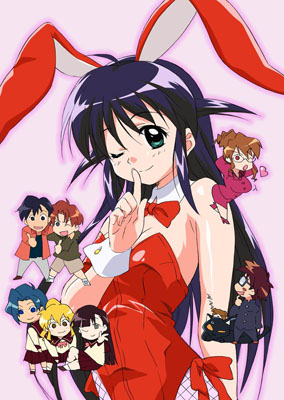
Conclusion
In the third chapter, we talked about:
- on-reading, kun-reading, nanori
- furigana
- origins of kanji/hanzi
- semantic elements and phonetic elements of kanji/hanzi
- modern Japanese kanji vs. modern Chinese hanzi
Ok, so that wasn’t the interesting and fun topic that I promised. Kanji is heavy stuff. If you don’t understand this chapter, it’s okay. The only really important thing you have to know when you learn the language is the fact that kanji have kun- and on-readings. The rest is purely useless head knowledge.
Anyway, the next chapter will be a lot more interesting and relevant. I hope.
Remember to nominate a girl for the next chapter~

You just scared the kanji shit outta me. *wished I paid more attention during chinese class*
Atleast i know the kanji for seppuko now. That will come handy when i see the next kanji. I will just perform it and shorten my pain.
ã•ã™ãŒã€ï¼°ï½ï½ï½…r先生。。。 本当ã«ã„ã„ガイドï¼ã€€
next girl… Lacus Clyne ãŠããŒã„ã—ã¾ã™ï½ž
I nominate Shana to be the next “mascot” girl for the next chapter. Her, or Louise from Zero no Tsukaima, but shots of the latter may be rare.
Wow. The kanji for seppeku is literally ‘cut belly’ in chinese…
And somehow, playing SRW forces you to understand kanji or die.
Wow now this is a good article. I actually learnt quite a bit from it.
Wow, ditto on what tj han said.
honto ni arigatou gozaimasu, sensei.
And I like to nominate the twins Mion and Shion from Higurashi for next lesson. There’s nothing better than killer loli’s teaching japanese. lol.
Wow. (lol, i seem to be the fourth person to say that)
Anyway, I’d have to say this is a very enlightening article. It’s odd how I took 2 years of college Japanese and I never knew about on-yomi and kun-yomi, so I never understood what those meant on WWWJDIC. I have learned something new today. yay!
Haha… Higurashi would be good, but shion and mion are far from lolis, especially compared to satoko and rika… Anyway, one vote for rena!
Well we should definitely save Rika for the lesson on Japanese sound symbolisms. Japanese is very rich in those:
kirakira (shine), korokoro (roll), kachikachi (freeze), surusuru (slide), …
My mind is still filled with memories of Rika-chan going “bou bou” and “woo woo” and “nya nya” and “mi” and “nipa.” :)
Next girl…
æˆç€¬å· ãªã‚‹ ! \o/
er…um… Could you explain why 今日 is read as “kyou”
Yeah, this is a good article. I learned something new :)
今日 can actually be read as “konnichi” (as in konnichiwa), which follows the on-readings.
“kyou” is the Japanese word with the same meaning before kanji was introduced as the writing system. After the writing system was created, they decided to use 今日 to represent “kyou” because they share the same meaning.
In a sense, it’s a “special” kun-reading that is only used for this specific compound word.
Similar examples are:
æµ´è¡£ yukata
明日 ashita
一日 tsuitachi
Wow! Thanks soo much, I’ve been reading this all day (at work and neglecting my duties ;D).
Your lessons have helped me so much and truthfully, I’m still very confused on this topic, but nevertheless I have learned a lot.
次ã®ã‚ャラ。。。
æ —åŽŸé€å「天使ã®ã„ãªã„12月ã€
:)
yay~ mahoro won :D
good article btw… it is quite interesting to read about such things, since i hope to take the time to actually learn this language someday…
thanks…
hmmm… next character… ah, shinobu from 2×2 shinobuden~!
Well, I definately learned a lot today, especially since my Japanese class is still stuck in the the katakana and ‘hajimemashite’s. :P Is learning at nigh-on-2-AM a good thing, by the way?
In the vein of girls-who-are-both-cute-and-buttkicking, I nominate Natsumi from Keroro Gunsou, who certainly has plenty of both qualities.
You know Yuki Nagato should have won…regardless, though, the site is really helpful, this article in particular. Regardless of the fact that every once in a while I may sort of “bwink out” while I’m reading, a quick re-ap makes it all better…good going.
On pronounciation is closest to the Chinese dialect Hokkien rather than ancient Chinese, that being said, there isnt really an ancient unified spoken Chinese.
I am not a student of Japanese studies or learning the Japanese language, but I do encounter words in Kanji that are dropped by the Chinese, aka no longer in use. Perhaps these forms up the kokuji which still carries the On pronunciation.
Kanji meanings differs from Chinese due to 2 main reasons which is (1) the incomplete import of the Chinese chrs and (2) the replacement of traditional native Japanese.
“Perhaps these forms up the kokuji which still carries the On pronunciation.”
according to kang xi dictionary, which has all sorts of old and ancient chinese worlds, webstite @ [http://www.kangxizidian.com/index2.php],…..those worlds never existed in chinese, unless i missed something…
This chapter was hard… T_T
But thanks for the hard work in trying to teach it to clueless people like me. ^^
I will just read it like 20 times more and then I hopefully understand it. ;P
Had I known about nanori when I started to learn japanese, I would have commited sepuku @.@
This was very interesting, thanks for doing this :)
Interesting
you are in point of fact a good webmaster. The website loading velocity is incredible.
It seems that you are doing any distinctive trick. In addition, The contents are
masterwork. you have done a magnificent job on this topic!
Also visit my blog – best exercise for lower back pain
I see your blog needs some unique & fresh content. Writing manually is time
consuming, but there is solution for this hard task.
Just search for; Miftolo’s tools rewriter